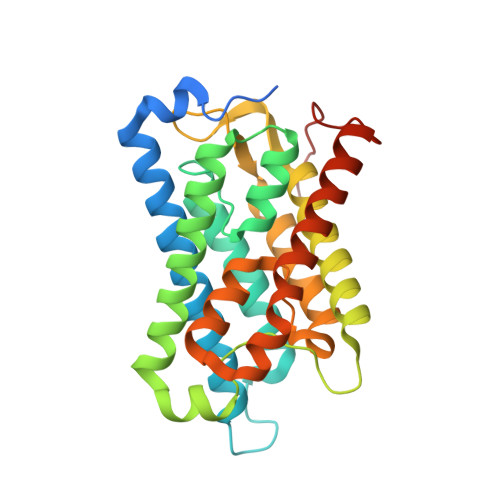Mercury increases water permeability of a plant aquaporin through a non-cysteine-related mechanism.
Frick, A., Jarva, M., Ekvall, M., Uzdavinys, P., Nyblom, M., Tornroth-Horsefield, S.(2013) Biochem J 454: 491-499
- PubMed: 23819815
- DOI: https://doi.org/10.1042/BJ20130377
- Primary Citation of Related Structures:
4JC6 - PubMed Abstract:
Water transport across cellular membranes is mediated by a family of membrane proteins known as AQPs (aquaporins). AQPs were first discovered on the basis of their ability to be inhibited by mercurial compounds, an experiment which has followed the AQP field ever since. Although mercury inhibition is most common, many AQPs are mercury insensitive. In plants, regulation of AQPs is important in order to cope with environmental changes. Plant plasma membrane AQPs are known to be gated by phosphorylation, pH and Ca²⁺. We have previously solved the structure of the spinach AQP SoPIP2;1 (Spinacia oleracea plasma membrane intrinsic protein 2;1) in closed and open conformations and proposed a mechanism for how this gating can be achieved. To study the effect of mercury on SoPIP2;1 we solved the structure of the SoPIP2;1-mercury complex and characterized the water transport ability using proteoliposomes. The structure revealed mercury binding to three out of four cysteine residues. In contrast to what is normally seen for AQPs, mercury increased the water transport rate of SoPIP2;1, an effect which could not be attributed to any of the cysteine residues. This indicates that other factors might influence the effect of mercury on SoPIP2;1, one of which could be the properties of the lipid bilayer.
- Department of Chemistry and Molecular Biology, University of Gothenburg, PO Box 462, SE-405 30 Gothenburg, Sweden.
Organizational Affiliation:



















